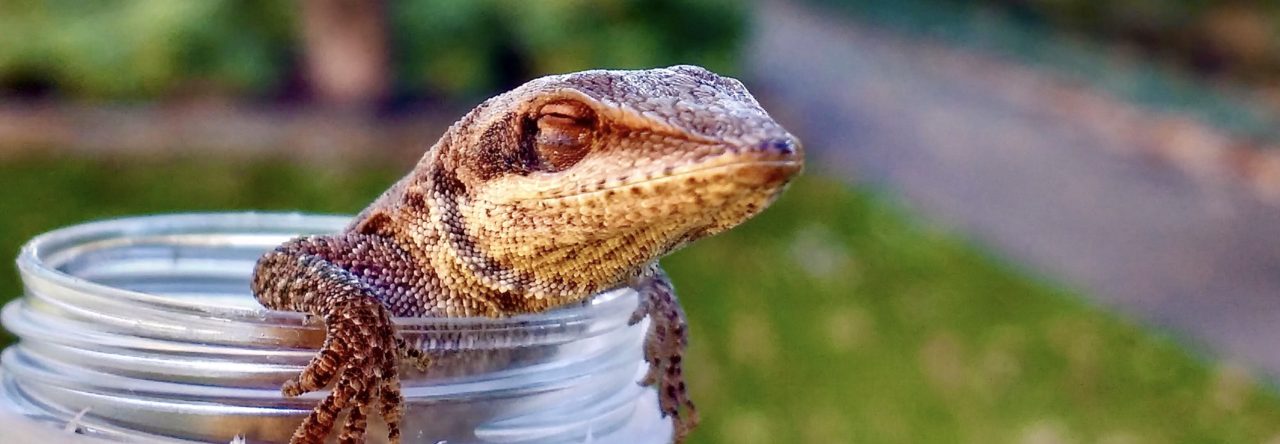The recent post on the newly described Anolis tenorioensis, and the variation in both dewlap and body coloration in that group of species, reminded me of the striking variation in body pattern and colour in the Lesser Antillean Anolis oculatus. I was in Dominica in 2010, ostensibly to collect data on hummingbirds and Heliconias, but spent some of my free time watching the island’s only native anole. We were living in the west of the island, near the Caribbean coast and surrounded by dry scrubby forest, and here A. oculatus looked like this:
In contrast, the anoles in the montane rainforest on the Freshwater Lake Trail, which is at an altitude of 2500 feet and was in a cloud when we were hiking it, looked like this:

Male A. oculatus, at Freshwater Lake Trail, Dominica

Female A. oculatus, at Freshwater Lake Trail, Dominica
A couple of papers from Roger Thorpe and colleagues (Thorpe 2002; Thorpe and Stenson, 2003) have examined similarly extensive variation in the colour patterns of A. trinitatis and A. roquet along altitudinal and xeric/mesic gradients. They suggest that at least part of this variation is adaptive: many Lesser Antillean anoles in montane rainforest habitats have converged to an “intense saturated green background hue, on which is black marbling and several large non-UV white spots.” Though crypsis seems like an obvious candidate for explaining this convergence (I for one found them harder to spot at Freshwater Lake Trail than at Salisbury), thermoregulatory factors may also play a role in determining dorsal colour or pattern. Are there other environmental factors that might explain the similar colours and patterns of anoles in Lesser Antillean montane rainforest habitats? Do montane anoles in the Greater Antilles or on the mainland also look similar?
- Field Assistant Needed for Anolis Research in Florida! - March 4, 2020
- Are Brown Anoles in Florida Really Driving Green Anoles to Extinction III: A Post-Irma Update - September 15, 2017
- Evolution 2017: Spatial Structuring of Urban Green Anoles - June 30, 2017



Rich Glor
We don’t see the same striking variation along altitudinal transects in the Greater Antilles, in part because lowland species are often replaced by montane endemics on the larger islands. Also, the marbled and spotted patterns common in Lesser Antillean species aren’t generally seen in the Greater Antilles.
Jonathan Losos
Not as striking, for sure, but Greater Antillean species due seem to vary from pale and greyish is arid settings to rich brown or greenish in more mesic ones. Very clearly seen in Jamaican species, less so on other islands.
Martha
You see similar variation in A. marmoratus. On the island of Basse-Terre alone, there are 4 “subspecies” of A. marmoratus, which are environmental color morphs. The montane form, A. m. alliaceus has a rich green color, too, but it generally has black spots (rather than marbling).